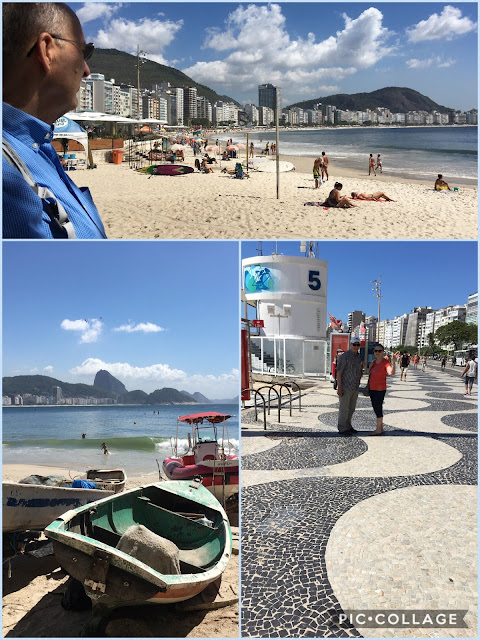We've just completed our two week spring cleaning break at the the temple.
Not wanting to hang around Curitiba during this time, we planned a little get-away.
Our adventure took us to
Rio de Janeiro→Brasilia→Recife→Manaus→São Paulo→back to Curitiba.
Then it was on to Foz do Iguaçu→São Paulo→Curitiba→back to São Paulo→then back to Curitiba→and finally Home Again for Real!
We chalked up over 7,300 air miles in our 14 days.
Sooooo much to cover!
Let's start with destination #1.
Rio de Janeiro
Rio attracts over 2.8 million tourists a year. We were just 4 of them!
Rio is also known as having the "bluest sky" in the whole wide world! (The statement seems bit audacious, but it’s actually based on a survey done in 2006 by a TV researcher who travelled around the globe in search of the world's bluest sky.)
This I didn't know...Rio has a nickname...Cidade Maravilhosa or 'the marvelous city'.
Rio de Janeiro has several gorgeous beaches, including world famous Copacabana and Ipanema. The beauty of Ipanema even inspired a popular bossa nova hit, The Girl from Ipanema.
The wavy black and white patterned sidewalks that run the 4-km-long distance of the promenade were completed in 1970. The black and white waves represent the White Europeans and the Black African slaves, whose history is intertwined in Brazil. Within the black and white lines, you will find pockets of red. This represents the indigenous peoples of Brazil.

Next time you’re strolling along the beach in Copacabana, look down and around you. Find those pockets of color in the sidewalk mosaic, and think about the history embedded there.
The Girl from...↓

The Girl from...↓

The Christ the Redeemer statue (Cristo Redentor) is located on Corcovado mountain in Tijuca forest, overlooking the city of Rio de Janeiro. It is the largest Art Deco statue in the world. It stands 98 feet tall, not including the pedestal. The outstretched arms on the Christ the Redeemer statue measure 28 feet wide. The statue took 9 years to construct and was completed in 1931. Even though it is struck by lightning a couple times a year, it lives on strong, watching over the citizens of the Marvelous City and stands as an enduring symbol of Brazilian Christianity.
The city’s famous Sugar Loaf Mountain (Pão de Açucar) is almost 400 meters high and supposedly resembles a heap of sugar. It has over 250 climbing routes, making it one of the world’s most popular urban climbing areas.
Favelas are Brazilian slums. They are often erected hastily and haphazardly to fulfill the necessity for immediate housing. The first recorded favela is believed to have been built in the late 1800s.There are more than 1,000 slums, or favelas, in Rio – and almost one fourth of Cariocas (locals) live in them. It was there, in the favelas, that former African slaves and their descendants first created the music style we now know as samba.
Nowadays, most of the city’s renowned samba schools that compete in the world famous parade every carnival are located in favelas, or close by.
(We didn't go in them - we just drove by them.)
We only had one day in Rio. We loved what we were able to see. We had a great taxi driver who took us all over. The new temple is being built quite a ways outside the main city - too far to visit.
Next stop-
Recife
...but that will have to wait until tomorrow.












No comments:
Post a Comment